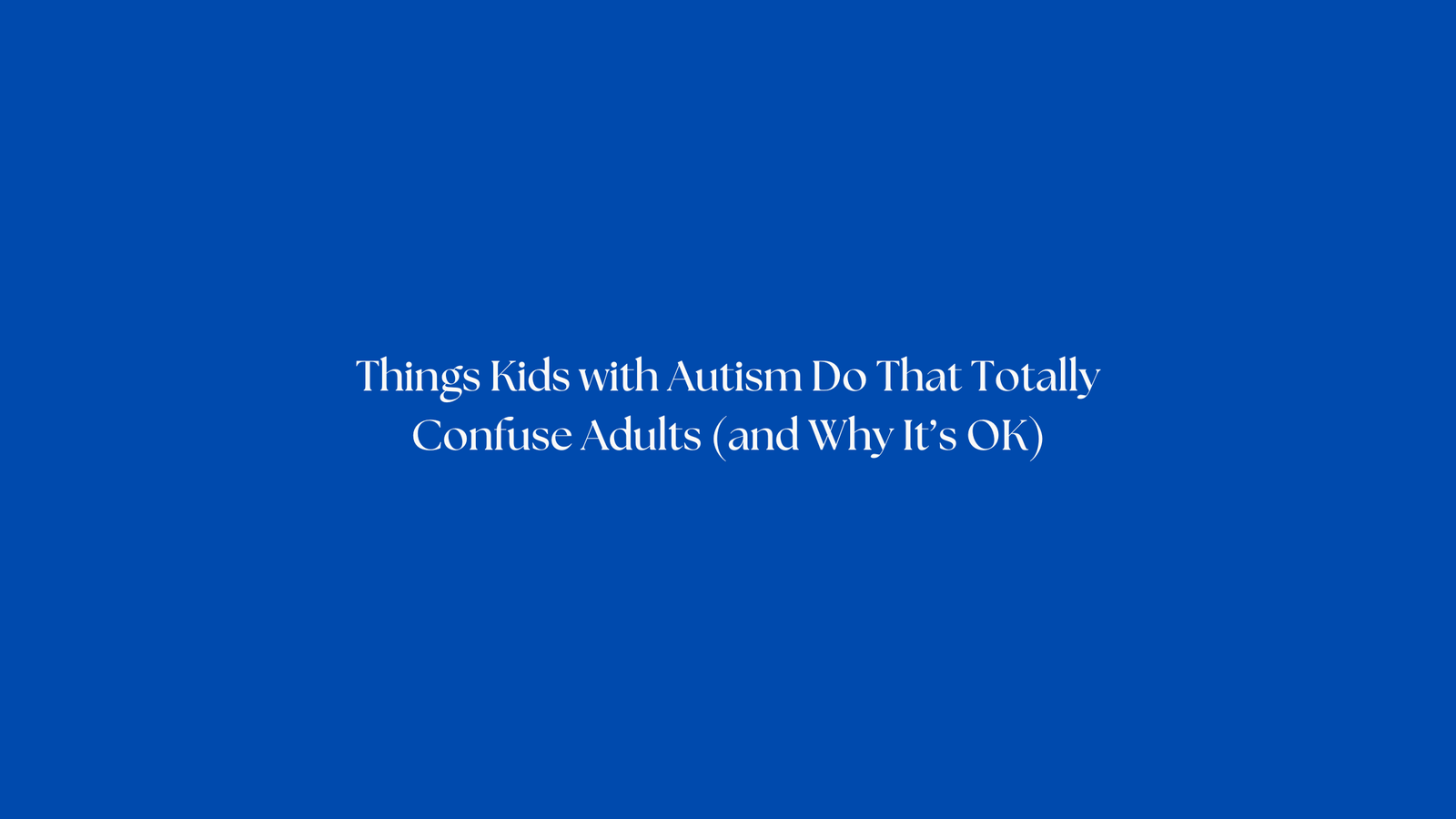Things Kids with Autism Do That Totally Confuse Adults (and Why It’s OK)

Behaviours that may seem unusual to some, like hand-flapping or lining up toys, are often an important way for autistic children to interact with and process the world around them. Understanding the purpose behind these actions can help build empathy and patience, shifting the focus from changing the child’s behaviour to changing our perspective.
What’s Behind the Behavior?
For many autistic children, these actions serve as a way to self-regulate, manage overwhelming sensory input, or create a sense of order. Here are a few examples:
- Hand-flapping: This repetitive motion is a common form of stimming (self-stimulatory behavior). It can be a way for a child to express or cope with intense emotions like excitement, anxiety, or stress.
- Avoiding Eye Contact: This is often not a sign of being rude or inattentive. For many autistic individuals, direct eye contact can feel physically uncomfortable or overwhelming, similar to how a bright light might bother someone with a headache. They may be listening more intently by looking away.
- Lining Up Toys: Creating order through lining up toys or other objects can be a comforting and predictable activity. This behavior provides a sense of control and can be a way to manage anxiety in a world that often feels chaotic.
Shifting Our Perspective
Instead of trying to stop these behaviors, we can learn to understand them as a form of communication. Recognizing that these actions have a purpose—whether it’s to calm down, focus, or express feelings—allows us to support the child’s needs rather than just reacting to the behavior.
